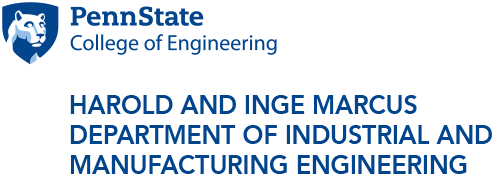
Brainstorming board, part of the creative process at work in Miller’s britelab.
Abandoning Creativity
Why don't we pursue our best new ideas?
12/12/2016
UNIVERSITY PARK, Pa. — When Scarlett Miller started teaching a first-year class in engineering design at Penn State a few years ago, she noticed something odd.
“I would see the students come up with really cool ideas [for new inventions], and then we’d get to the final prototype of the semester, and somewhere along the line something had happened,” she says. The students had left their most original ideas behind.
Miller, an assistant professor of engineering design and industrial engineering, had studied creativity in her graduate work—specifically, how to teach and encourage others to come up with promising new ideas. That students who already had good new ideas would quickly abandon them came as a big surprise.
So she and her lab began investigating how her novice designers decided which ideas to pursue. At the start of each semester, she surveyed the students to assess various personality traits, then had them form groups of four and gave them their assignment: Design and build a new device to froth milk for use in cappuccino. Emphasis was on the new — the students were told they would be graded on the novelty of their device, as well as on its function.
Each student sketched several ideas, then privately rated the creativity of each design generated by everyone in the group and indicated which one he or she thought the team should build. That allowed Miller to see which ideas each student favored before hearing — and possibly being swayed by — their teammates’ opinions. Then each group discussed its ideas and chose one to develop into a prototype. Miller recorded and analyzed their deliberations, hoping to learn where in the process the best new ideas got left behind — and why.
“If we can understand why the design decisions are being made, then we can start developing tools to help creative ideas to be more thoughtfully considered and not just quickly discarded,” she says.
Risky business
The pre-project surveys revealed that many personal traits correlate with which ideas a person will favor. Extroverted students push harder for their ideas to be chosen than do more introverted students, for instance, but that sense of confidence in their own ideas varies by gender.
“We found that women are more likely to support or select their team members’ ideas, even if their own idea is good,” says Miller — and they choose those other ideas even in the initial, private assessment. “Men are more likely to select their own ideas, regardless of whether they’re good or not.”
Overall, the most significant factor influencing the students’ choices involved the newness of the ideas—and not in the way Miller had hoped. Despite knowing they would be graded on the novelty of their device, the students overwhelmingly chose to pursue designs that were close enough to existing products that they were almost guaranteed to work.
“Yes, it needs to work,” says Miller, a note of exasperation in her voice. “But it also needs to be a new way of solving the problem. If you’re working for a company, they’ll want to patent the idea — and if you can’t prove that it’s a new way of solving the problem, then you can’t have a patent in that space.”
The students’ overriding concern about whether their device would work got Miller thinking about their comfort with risk. She and graduate student Christine Toh began surveying students at the beginning of the semester to evaluate their risk-taking behavior in situations involving small sums of money. They found that students who were relatively tolerant of risk and uncertainty in that realm were more likely to select creative ideas during the design process — and that those students were very much in the minority. Most of their colleagues were much more averse to risk and uncertainty and much more likely to opt for a conservative design choice.
Miller thinks this tendency toward caution is not unique to students. In preliminary surveys of professional designers, she heard of a similar reluctance to invest in new ideas in the business world.
“There is kind of a disconnect between what the explicit goals are of the company and how that translates into the acceptance or support of creative ideas,” she says. In such an organization, no one wants to be associated with a new product that fails, so everyone steers toward safer, more conservative choices. Bringing company practice into line with the goal of creativity would require everyone, from design interns to the CEO, to tolerate more uncertainty—and to not punish employees for trying something truly new.
Companies that excel at innovation have plenty of misses to go along with their greatest hits—and, crucially, they can’t tell ahead of time which will make it big and which will fail. In 2007, industry analysts predicted that a radical new device combining mobile phone, camera, music library, and email access would be a disaster for Apple, which had previously struck out with the Newton, the “hockey-puck mouse,” and several other highly novel offerings. But the company persisted, and the iPhone became one of the best-selling products ever made.
“Not every innovative product is going to be a huge success on the market,” says Miller. “The company has to have a culture that allows and can rebound from that.”
Redefining creativity?
From the beginning, Miller has shared the results of her surveys with her students so they could see how their habitual mindset might affect their design decisions. She and graduate students Christopher Gosnell and Elizabeth Starkey took that a step further with their invention of the Tool for Assessing Semantic Creativity (TASC), an online survey that uses students’ own descriptions of their designs to identify the most novel, yet workable, ideas.
“This tool doesn’t make the decision for you,” says Miller. “It informs your decision-making.”
Miller hoped it would help students become more aware of their own tendency to dismiss radically new ideas too quickly. It seems to be working. In classroom experiments, groups that use TASC to assess their ideas do choose more creative options than groups that don’t use it.
After analyzing the results from several of their studies, Miller and Toh realized something totally unexpected: The most “creative” students, in terms of being able to come up with highly novel ideas, tend to be really bad at recognizing and pursuing novel ideas. When the time comes to decide which design to develop into a product, they actually choose more conservative options.
“There is NO correlation between someone who’s able to generate really good ideas and one who prefers them during the concept selection process,” says Miller—and that has big implications for business leaders. Stacking a new product development team with employees who are good at coming up with highly innovative ideas is probably not going to lead to the most innovative result.
Throughout these studies, Miller keeps thinking about her graduate work on how to stimulate creative thinking. She is now convinced that we already have effective techniques to help people think more novel thoughts. What’s needed now is for designers and the people who manage them to learn how to identify and encourage a whole different set of creative skills. How do we decide what to do with the results of our brainstorming sessions? And how much are businesses — and society as a whole — losing, by leaving so many creative ideas behind?
“You can train someone to be good at coming up with ideas,” says Miller. “That’s pretty easy. But the question has always been and will continue to be, what happens to those ideas?”
This work is supported by a grant from the National Science Foundation. Scarlett Miller is an assistant professor of engineering design and industrial engineering. Christine Toh is now an assistant professor of IT innovation at the University of Nebraska Omaha.
This story first appeared in the Fall 2016 issue of Research/Penn State magazine.



